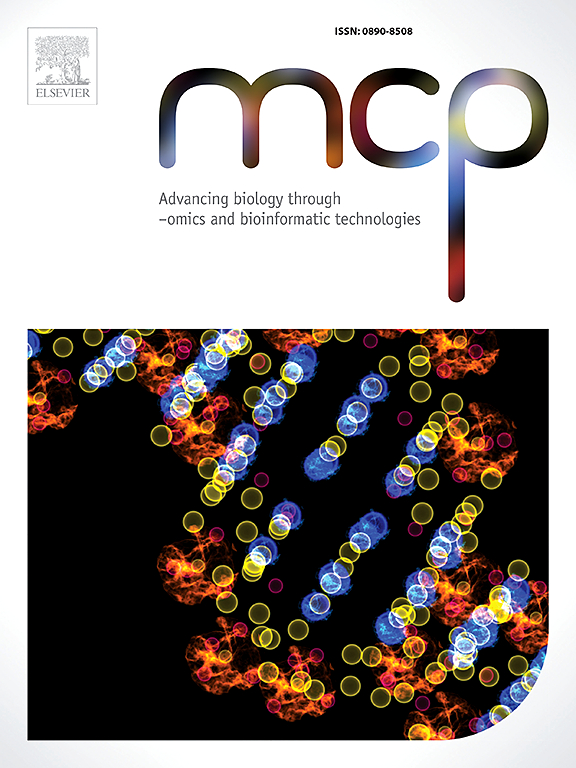LncRNA TMC3-AS1沉默通过抑制wnt5a介导的自噬和焦亡途径减轻脂多糖诱导的急性肾损伤。
IF 2.3
3区 生物学
Q3 BIOCHEMICAL RESEARCH METHODS
引用次数: 0
摘要
长链非编码RNA TMC3-AS1在炎症性疾病中被脂多糖(LPS)上调,但其在急性肾损伤(AKI)中的作用几乎未知。本研究探讨了TMC3-AS1参与lps诱导的AKI及其下游分子调控机制。我们的数据表明,敲低TMC3-AS1可显著减轻lps诱导小鼠的肾功能障碍、组织炎症和组织损伤,提高lps刺激的人肾小管上皮细胞HK2的细胞活力,抑制炎症、凋亡和坏死。同时,沉默TMC3-AS1可降低Wnt5a、Atg5、NLRP3和cleaved caspase1的表达水平及LC3II/LC3I比值,但提高体内外p62水平,提示沉默TMC3-AS1对Wnt5a信号通路、自噬和焦亡有抑制作用。机械上,TMC3-AS1通过与miR-148a-3p的竞争性结合上调WNT5A mRNA和WNT5A蛋白的表达,从而提高lps诱导的HK2细胞中自噬和热噬相关标志物的表达水平。MiR-148a-3p mimic对lps处理的HK2细胞也有保护作用,但这种作用会被过表达WNT5A或TMC3-AS1所抵消。总之,这些发现表明TMC3-AS1抑制通过灭活Wnt5a介导的自噬和焦亡途径抑制lps触发的AKI进展。本文章由计算机程序翻译,如有差异,请以英文原文为准。
LncRNA TMC3-AS1 silence alleviates lipopolysaccharide-induced acute kidney injury by suppressing Wnt5a-mediated autophagy and pyroptosis pathway
Long non-coding RNA TMC3-AS1 is identified to be upregulated by lipopolysaccharide (LPS) in inflammatory disease, but its role in acute kidney injury (AKI) is almost unknown. The study investigated the involvement of TMC3-AS1 in LPS-induced AKI and its downstream molecular regulatory mechanism. Our data suggested that knocking down TMC3-AS1 significantly reduced renal dysfunction, tissue inflammation and tissue damage in LPS-induced mice, and promoted cell viability, inhibited inflammation, apoptosis and necrosis in LPS-stimulated human renal tubular epithelial cells HK2. Meanwhile, silencing TMC3-AS1 decreased the expression levels of Wnt5a, Atg5, NLRP3 and cleaved caspase1 and the ratio of LC3II/LC3I, but elevated p62 level in vivo and in vitro, suggesting the inhibitory effect of TMC3-AS1 silence on Wnt5a signaling, autophagy, and pyroptosis. Mechanically, TMC3-AS1 upregulated the expression of WNT5A mRNA and Wnt5a protein through competitively binding with miR-148a-3p, thus elevating the expression levels of autophagy and pyroptosis-associated markers in LPS-induced HK2 cells. MiR-148a-3p mimic also exerted protective effects on LPS-treated HK2 cells, which was counteracted by overexpressing WNT5A or TMC3-AS1. Altogether, these findings reveal that TMC3-AS1 inhibition restrains LPS-triggered AKI progression through inactivating Wnt5a -mediated autophagy and pyroptosis pathway.
求助全文
通过发布文献求助,成功后即可免费获取论文全文。
去求助
来源期刊

Molecular and Cellular Probes
生物-生化研究方法
CiteScore
6.80
自引率
0.00%
发文量
52
审稿时长
16 days
期刊介绍:
MCP - Advancing biology through–omics and bioinformatic technologies wants to capture outcomes from the current revolution in molecular technologies and sciences. The journal has broadened its scope and embraces any high quality research papers, reviews and opinions in areas including, but not limited to, molecular biology, cell biology, biochemistry, immunology, physiology, epidemiology, ecology, virology, microbiology, parasitology, genetics, evolutionary biology, genomics (including metagenomics), bioinformatics, proteomics, metabolomics, glycomics, and lipidomics. Submissions with a technology-driven focus on understanding normal biological or disease processes as well as conceptual advances and paradigm shifts are particularly encouraged. The Editors welcome fundamental or applied research areas; pre-submission enquiries about advanced draft manuscripts are welcomed. Top quality research and manuscripts will be fast-tracked.
 求助内容:
求助内容: 应助结果提醒方式:
应助结果提醒方式:


